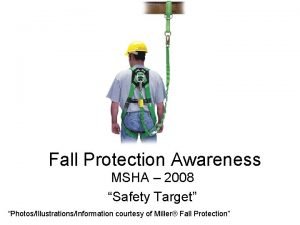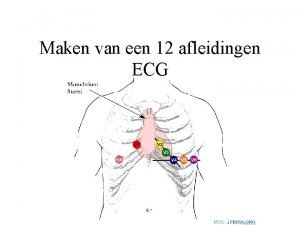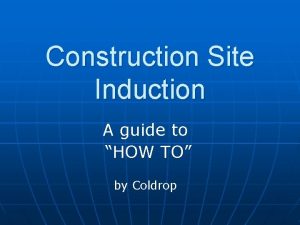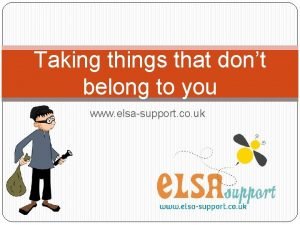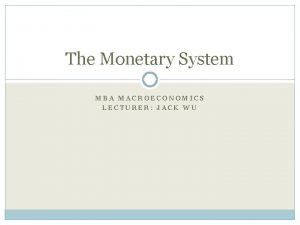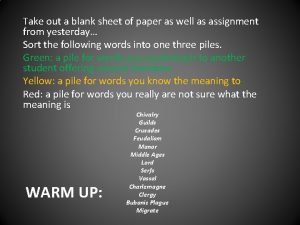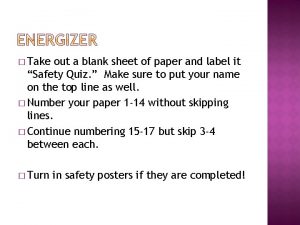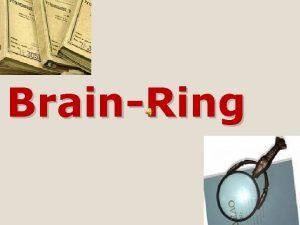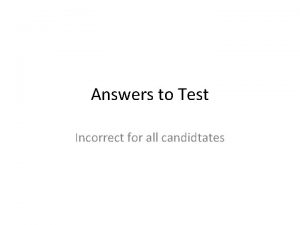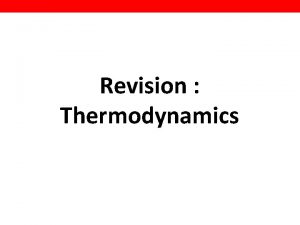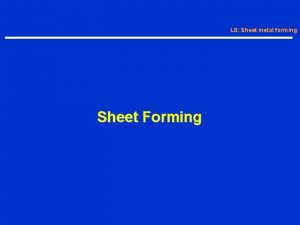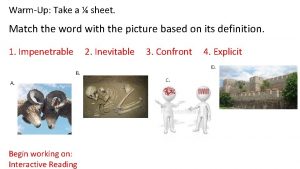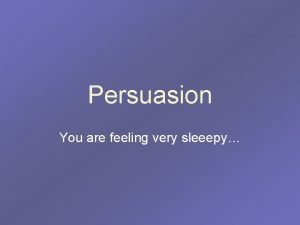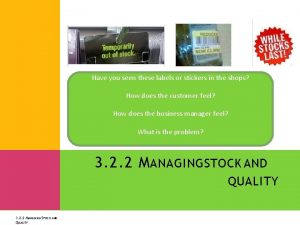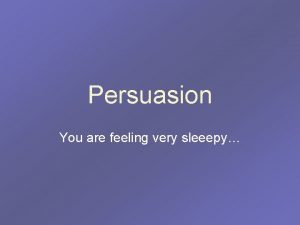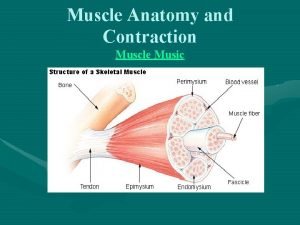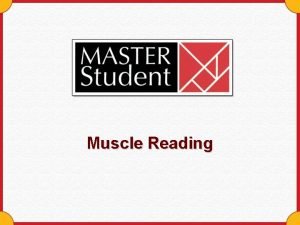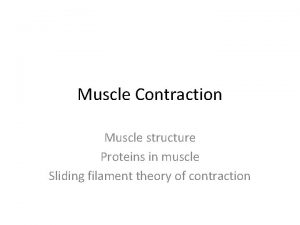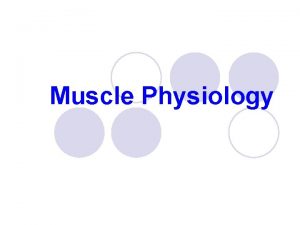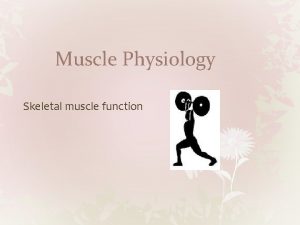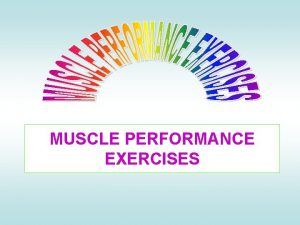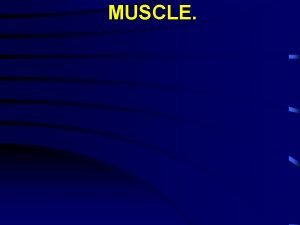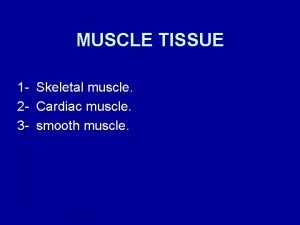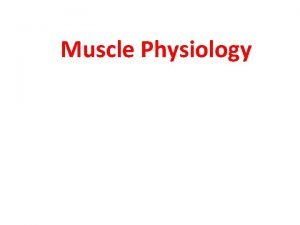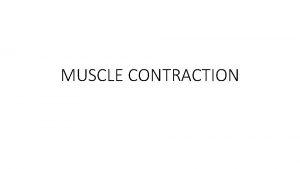Muscle Match Take you sheet of muscle stickers






















- Slides: 22

Muscle Match • Take you sheet of muscle stickers and try to put them on the right muscles!

Key Deltoids Trapezius & Lats

Notes Pg. 30: Muscular System Just kidding

Muscular System • Functions of the muscular system: – A) Movement of the skeleton – B) Regulate blood pressure – C) Move food through the digestive system

Skeletal Muscles • Usually attached to bones • Responsible for voluntary movements – Consciously controlled by the Central Nervous System (brain) • Ex: Used to kick a soccer ball or dance

All work together to help us move

Let’s move! • Flexion & Extension (& Hyperextension) – Ex: Doing pushups – Ex: Carrying the groceries

Let’s move! • Abduction & Adduction – Ex: Riding a horse

Let’s move! • Supination & Pronation – Ex: Balancing/dribbling a basketball

• Circumduction – Ex: Throwing a baseball

Smooth Muscles • Usually NOT voluntarily controlled • Found in the wall of hollow structures such as: – Stomach, blood vessels, intestines • Move food through your digestive tract • Control the way blood flows through your circulatory system • Decreases the size of your eye pupils in bright light • Ex: Rumbling stomach when hungry

Cardiac Muscles • Found only in the heart • Cardio means “heart” in Greek • Under Involuntary control • Ex. When frightened your heart rate increases

How Muscles and Bones Interact • Skeletal muscles are joined to bones by tough connective tissues called Tendons • Tendons are attached to bones in a way that makes them act like levers – The muscle provides the force to move the lever

• Most skeletal muscles work in opposing pairs – Ex: Upper arm: Bicep against Tricep muscles

Bending arm Straightening arm

Exercise & Strength • Skeletal muscles generally remain in a state of partial contraction throughout day – Muscle tone is responsible for keeping your back and legs straight and head upright- even when relaxed – Hence your head dropping if you fall asleep in class • Regular exercise is important for maintaining muscular strength and flexibility, especially as you get older • Muscles that are exercised regularly increase in size and strength by adding actin and myosin- they really do grow bigger!

5 Functions

Types of Joints • Immovable (ex. Skull) • Movable 4 types of movable: 1. Hinge: Back & forth, ex. Knee 2. Ball & Socket: Greatest movement, ex. Hip, shoulder 3. Pivot: Rotation, ex. Neck 4. Gliding: Side-to-side & limited movement, ex. Wrist

We Move in Different Ways

Double-Jointed? • Hypermobile joints are not doubled/extra in any sense • Approximately 5% of the healthy population have one or more hypermobile joints. • Is a weakly stabilized joint because of loose ligaments or tendons • Their joints may be easily injured, be more prone to complete • Can lead to chronic pain or even disability in severe cases. – Musical instrumentalists with hypermobile fingers may have difficulties when fingers lock – Also may display superior abilities due to their increased range of motion for fingers.

Knuckle Cracking • Knuckle "cracking" has not been shown to be harmful or beneficial. More specifically, knuckle cracking does not cause arthritis (inflammation of joints). • Joint "cracking" can result from a negative pressure pulling nitrogen gas temporarily into the joint • "Cracking" sounds can also be heard if tendons snap over tissues because of minor adjustments in their gliding paths. • If cracking is accompanied by pain, there could be underlying abnormalities of the structures of the joint, such as loose cartilage or injured ligaments.

Joint Types Mini. Lab
 Safety stickers
Safety stickers Photo stickers examples
Photo stickers examples Did hitler invent scratch and sniff stickers
Did hitler invent scratch and sniff stickers Tag questions simple present
Tag questions simple present Demonstrative and possessive pronouns
Demonstrative and possessive pronouns Ecg plakken
Ecg plakken Construction site induction
Construction site induction Take a bus or take a train
Take a bus or take a train To take something that doesn't belong to you
To take something that doesn't belong to you The more you take the more you leave behind
The more you take the more you leave behind If you ask him he (take) you to the airport
If you ask him he (take) you to the airport If you ask him he (take) you to the airport
If you ask him he (take) you to the airport You take 100 you had kept under your mattress and deposit
You take 100 you had kept under your mattress and deposit Take out a sheet of paper
Take out a sheet of paper Take out a sheet of paper
Take out a sheet of paper Duties of stock verification officer
Duties of stock verification officer Fusiform fibers smooth muscle
Fusiform fibers smooth muscle _____ muscles run across the cheek.
_____ muscles run across the cheek. Match the criminal to the crime
Match the criminal to the crime From michael, all the group arrived on time.
From michael, all the group arrived on time. Sin will take you farther
Sin will take you farther Psalms 1
Psalms 1 1 corinthians 10
1 corinthians 10
